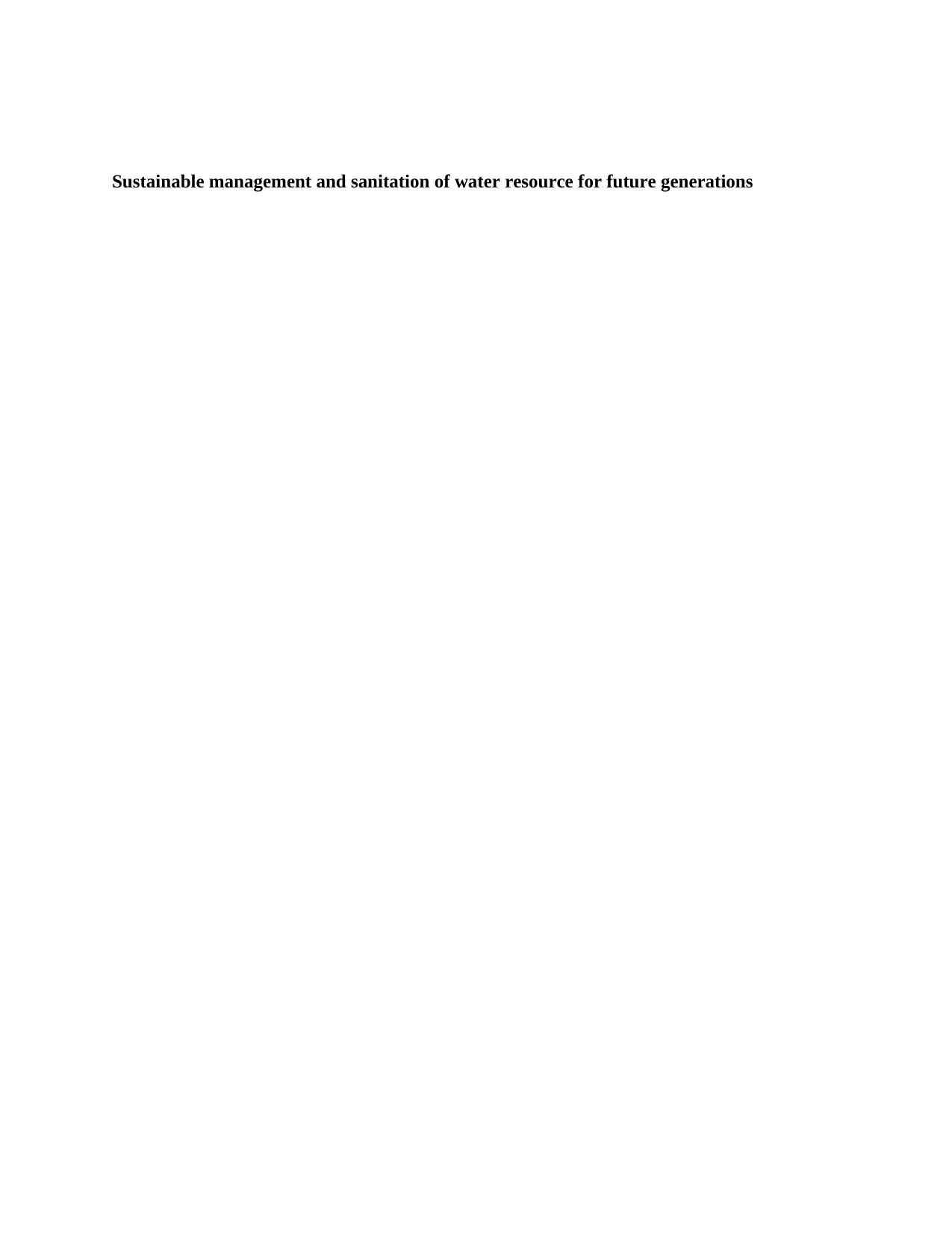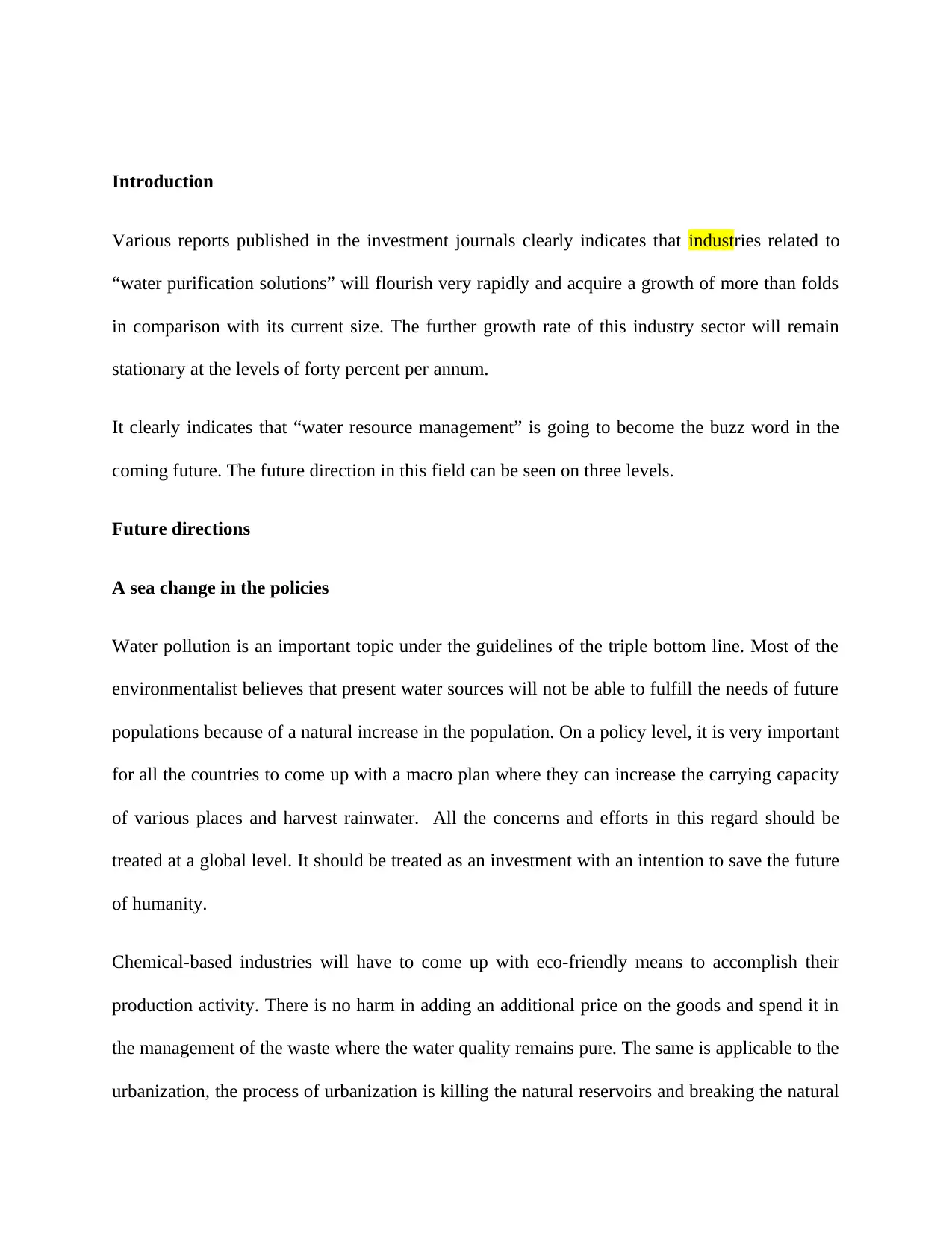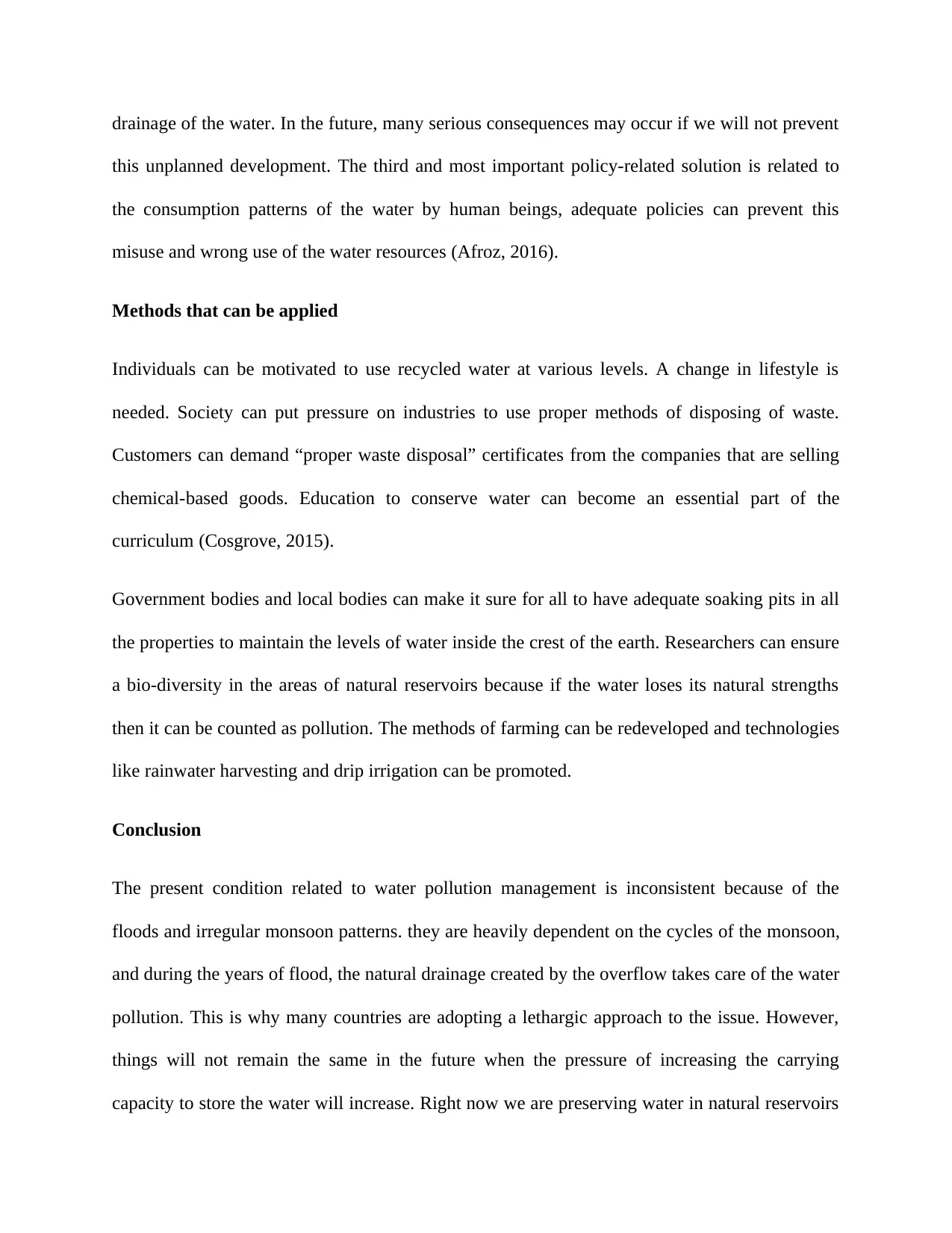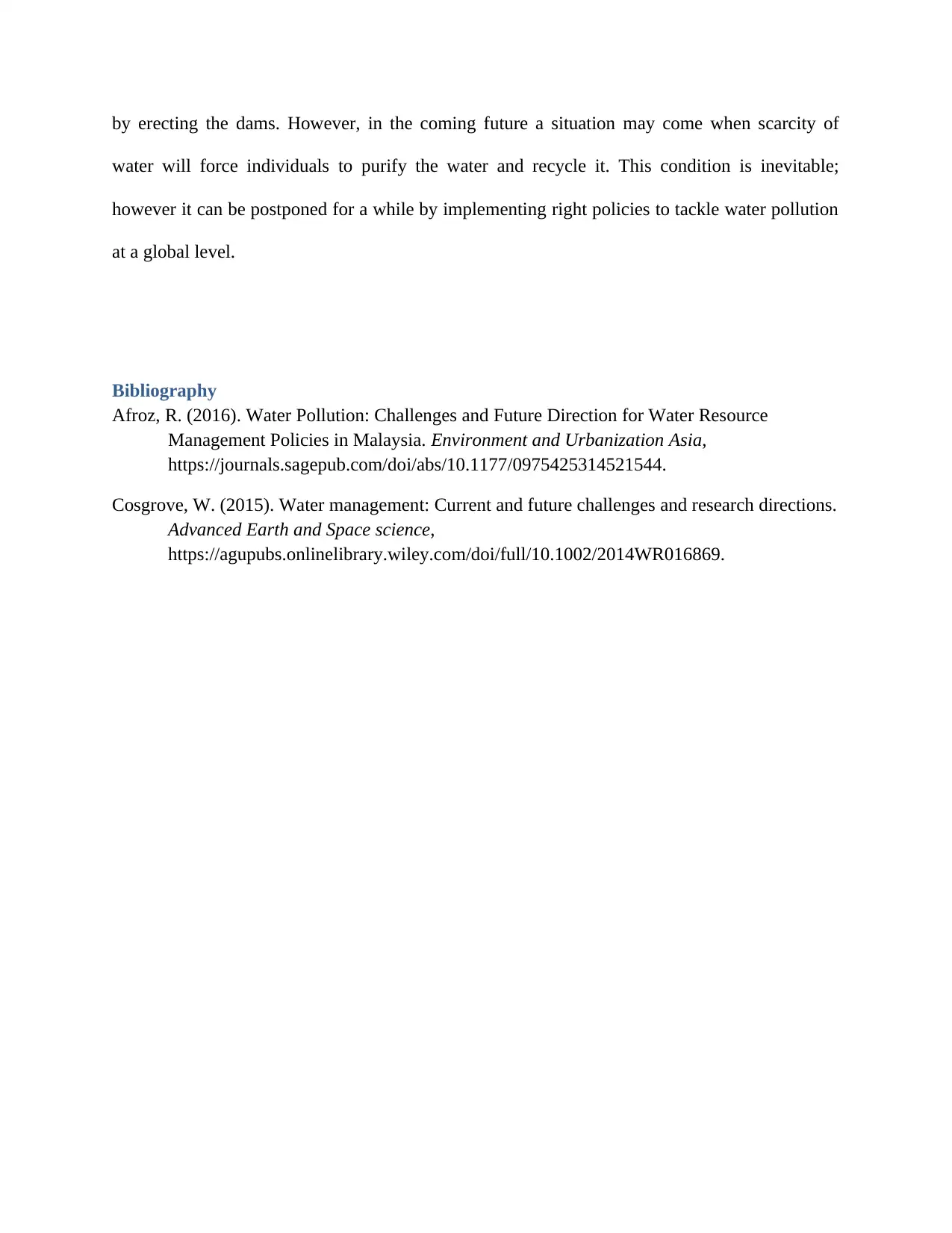Environmental Science Report: Water Resource Management and Sanitation
VerifiedAdded on 2022/09/28
|5
|720
|31
Report
AI Summary
This report addresses the critical need for sustainable water management and sanitation to ensure water resources for future generations. It highlights the growing importance of the "water purification solutions" industry and emphasizes the necessity of proactive measures due to increasing population and environmental concerns. The report outlines future directions at the policy level, advocating for global cooperation, eco-friendly industrial practices, and responsible urbanization to protect natural reservoirs. It also suggests individual and societal actions, including promoting recycled water use, enforcing proper waste disposal, integrating water conservation education, and implementing technologies like rainwater harvesting. The analysis concludes that while current conditions may mask the urgency due to irregular monsoon patterns, the future demands proactive water management policies and sustainable practices to mitigate water scarcity and pollution challenges. The report references key academic sources to support its findings.
1 out of 5












![[object Object]](/_next/static/media/star-bottom.7253800d.svg)